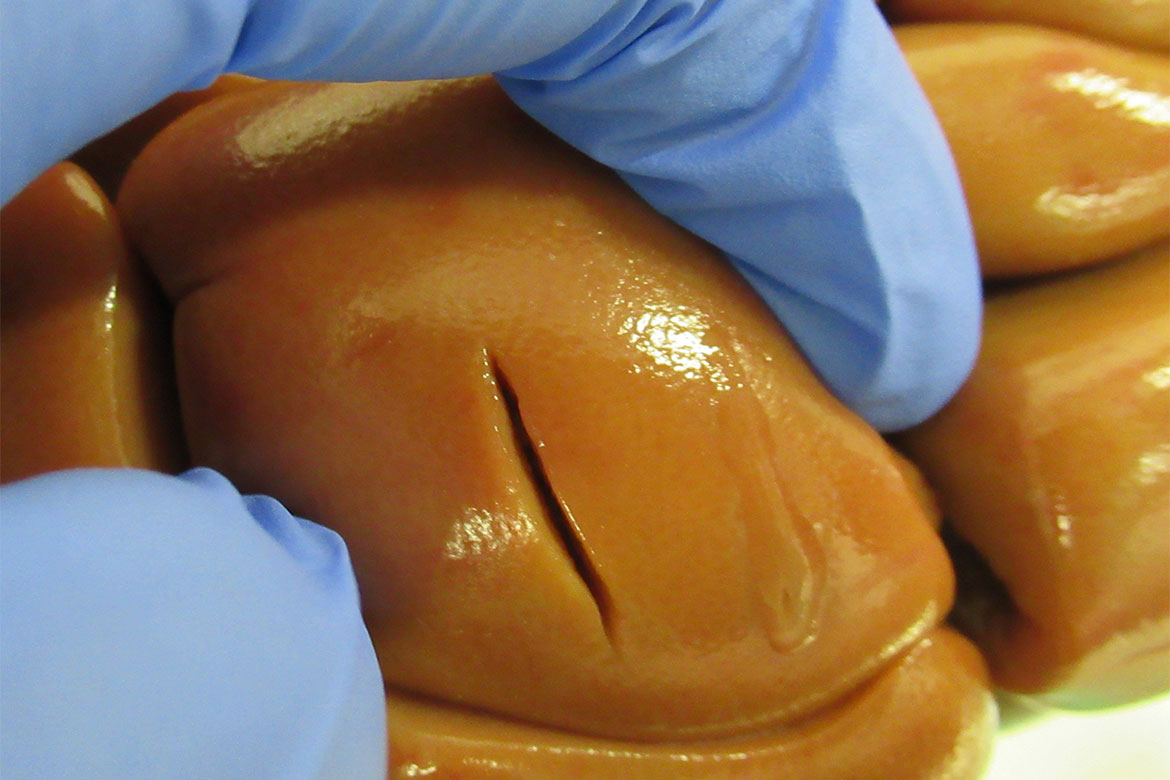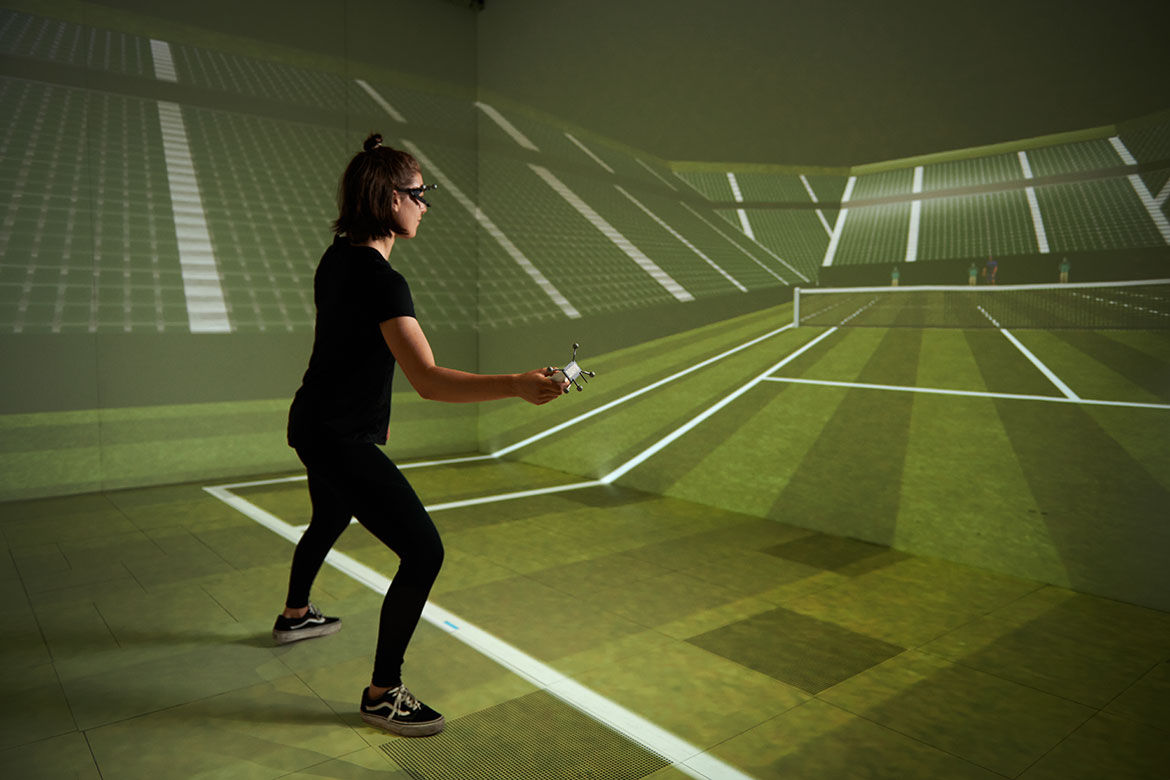ORTHOPAEDICS
Gluing the meniscus
An innovative adhesive gel is being used to repair torn cartilage and injured organs.

The new bio-glue is here being tested on the liver of a cow: the right-hand cut has been glued back together. | Photo: EPFL
Sometimes a footballer will suddenly twist his leg, or someone laying tiles will strain their knee – and they’ve promptly torn their meniscus. This is a kind of cushion made of cartilage that acts as a shock absorber in our joints. Up to now, it has been difficult to repair because it has a poor blood supply. “Sewing a tear in the meniscus is often unsuccessful”, says the materials scientist Peyman Karami of EPFL. Instead, together with his colleague Dominique Pioletti, he has been developing a kind of bio-glue that can patch up the torn cartilage tissue.
For years now, researchers have been utilising hydrogels of this kind to repair damage to soft tissue. But these generally do not adhere sufficiently to the tissue, or slip out of place after a while. For this reason, Karami and his team have provided their hydrogel with several special features. First, they created a kind of net comprised of hyaluronic acids or gelatine. Then, to ensure that it would adhere properly to the cartilage, they looked for examples in Nature – such as mussels that adhere incredibly well to surfaces, or the so-called sandcastle worms that build mighty tube reefs from individual grains of sand. The researchers took extracts of the sticky compounds of both creatures and added them to their molecular nets. And they found that their new hydrogel indeed adhered firmly to cartilage and to other soft tissues.
In order for medics to be able to use this hydrogel everywhere in the body in future, Karami and his team have now developed their product in liquid form. Only when it is injected into the desired area and is subjected to a light source does it assume its solid consistency. Besides meniscus damage, this hydrogel could in future also be used to repair injuries to the cornea, liver, kidneys or heart. But according to Karami, it will take at least another three years before the first clinical studies can be carried out.




